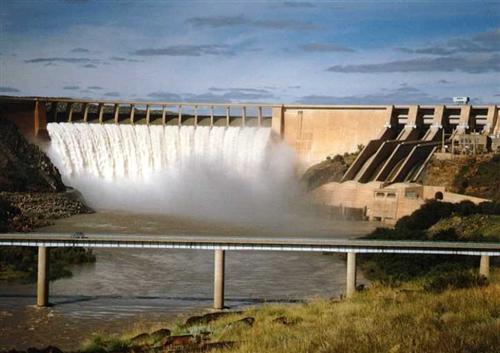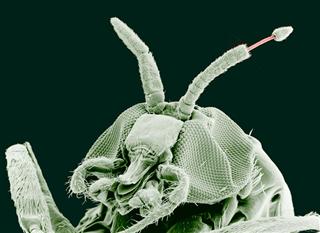Human activities affecting water temperature can include the discharge of cooling water or heated industrial effluents, agriculture and forest harvesting (due to reduced shading), urban development that alters the characteristics and path of storm water runoff, human and activities that produce climate change. Another means of influencing instream temperatures is to change the depth of the water through damming or water abstraction. Shallower waters tend to be warmer because of greater solar penetration.
Water is released twice a day from the Gariep and Vanderkloof Hydro Power Stations causing a significant modification in downstream water levels and flow when compared to the un-dammed flow. These modifications to environmental flows have resulted in stabilisation of the temperature regime in the water, detectable up to an estimated 180 km downstream.

Water released from dams such as the Vanderkloof Dam alters the temperature regime of the river downstream.
Source:DWAF South Africa 2009
( click to enlarge )
The stabilisation of flow rate and water temperature downstream of Gariep and Vanderkloof Dams has not only produced positive results:
For example, the eggs of certain fish species require variations in temperature and water level for hatching. Some of these species are now extinct in the Orange-Senqu River.
However, blackflies, serious pests, have benefitted from the new situation. In the past, the numbers of blackfly larvae were kept in check by exposure to the sun, when water levels were low. Today they are protected by stable water levels, and they find plentiful food in the form of algae and bacteria. This allows the diminutive, blood-sucking insects to proliferate and form swarms that stress cattle, sheep and goats to the point where they no longer eat.
 Blackfly proliferate in stable water temperature conditions. Source:USDA 2005 ( click to enlarge ) |
